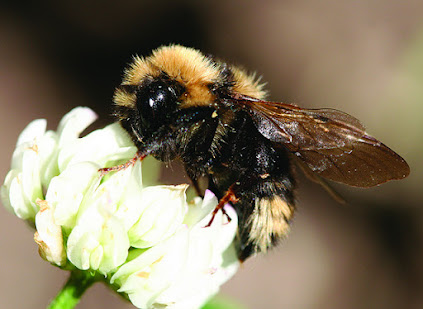Pollination is the transfer of pollen from the anthers (male parts) of a flower to the stigma (female parts) of a flower of the same species, which results in fertilization of plant ovaries and the production of seeds.
The male parts of the flower are called the stamens and are made up of the anther at the top and the stalk or filament that supports the anther. The female elements are collectively called the pistil. The top of the pistil is called the stigma.
Honey bees pollinate plants as they forage on the flowers. When they collect nectar and pollen from the flower of a plant, some pollen from the stamens sticks to the hairs of their body. When they visit the next flower, some of this pollen is rubbed off onto the stigma, or tip of the pistil. This initiates the plant pollination process.
Bees make excellent pollinators because most of their life is spent collecting pollen, a source of protein that they feed to their developing offspring.
Pollination and honey bees
An online platform focused on agricultural technology offers insights into the scientific knowledge and methodologies relevant to the field of agriculture. This knowledge is sourced from validation research, adaptive research, and creative research.
Saturday, January 1, 2022
The most popular articles
-
Dent corn, scientifically known as Zea mays indentata , is a crucial staple crop with indented kernels primarily used for animal feed, indus...
-
Mitochondria were first seen in plant cells by Wilhelm Hofmeister in 1851. The morphology of mitochondria varies not only from one cell to a...
-
Supporting the need to reduce the usage of chemical fertilizer in agriculture, the application of probiotics has a great potential. WHO de...
-
The starch content of the kernels is what separates waxy from regular yellow dent field corn. Normal corn kernels consist of 75% amylopecti...
-
Modern rice harvesting techniques have transformed global agriculture by increasing efficiency, productivity, and sustainability—key factors...





